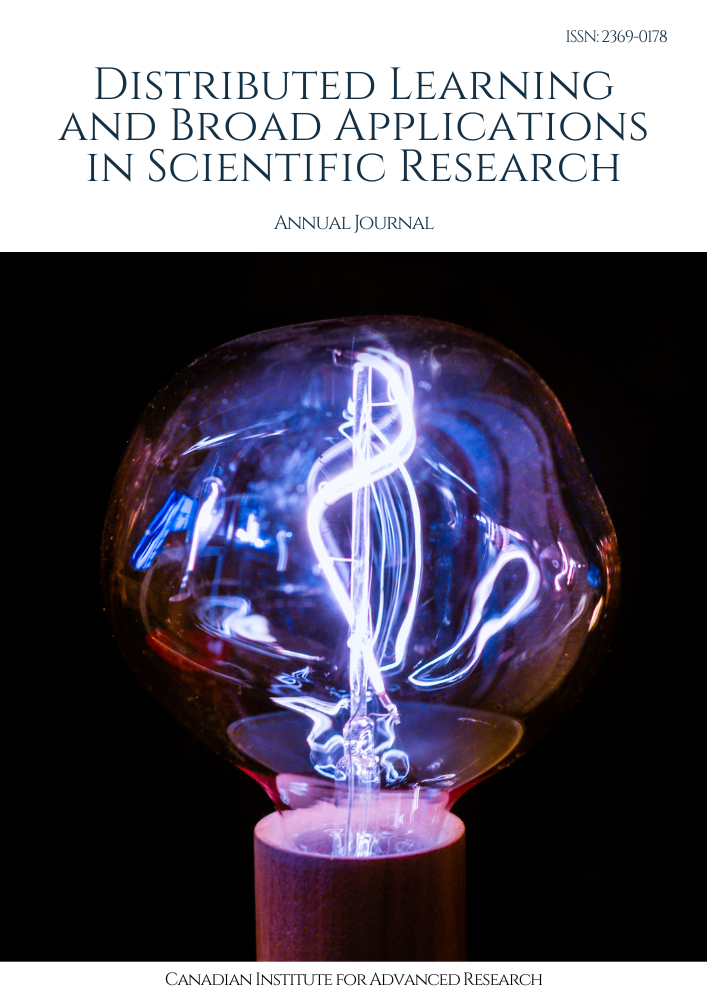Network Isolation Techniques in Multi-Tenant EKS Clusters
Keywords:
Network isolation, multi-tenant EKS clustersAbstract
Managing network isolation in multi-tenant Amazon Elastic Kubernetes Service (EKS) clusters is critical to ensuring security, scalability, and compliance in cloud-native environments. In such clusters, multiple tenants or teams often share resources, creating a potential for unintended access and communication between workloads. This abstract explores practical techniques for achieving network isolation in these scenarios, focusing on Kubernetes-native features and AWS-specific tools. Key strategies include: Leveraging Kubernetes Network Policies to enforce fine-grained communication rules between pods and namespaces, Utilizing AWS VPCs and security groups for broader network segmentation and Implementing service meshes like Istio for more dynamic traffic control and observability. Additionally, concepts such as tenant-aware namespace strategies, Role-Based Access Control (RBAC), and dedicated subnets within a shared VPC are discussed to achieve comprehensive isolation. By combining Kubernetes' inherent capabilities with AWS-specific networking constructs, organizations can balance isolation with operational efficiency, enabling safe multi-tenancy without compromising cost-effectiveness or performance. This article provides actionable insights and best practices for engineers, security teams, and DevOps professionals aiming to secure their EKS clusters while maintaining flexibility for diverse workloads.
Downloads
References
Truyen, E., Van Landuyt, D., Preuveneers, D., Lagaisse, B., & Joosen, W. (2019). A comprehensive feature comparison study of open-source container orchestration frameworks. Applied Sciences, 9(5), 931.
García-López, P., Sánchez-Artigas, M., Shillaker, S., Pietzuch, P., Breitgand, D., Vernik, G., ... & Ferrer, A. J. (2019). Servermix: Tradeoffs and challenges of serverless data analytics. arXiv preprint arXiv:1907.11465.
Jonas, E., Schleier-Smith, J., Sreekanti, V., Tsai, C. C., Khandelwal, A., Pu, Q., ... & Patterson, D. A. (2019). Cloud programming simplified: A berkeley view on serverless computing. arXiv preprint arXiv:1902.03383.
Gade, K. R. (2018). Real-Time Analytics: Challenges and Opportunities. Innovative Computer Sciences Journal, 4(1).
Rahman, J. (2019). Building QoS-aware cloud services (Doctoral dissertation, The University of Texas at San Antonio).
Sayfan, G. (2019). Hands-On Microservices with Kubernetes: Build, deploy, and manage scalable microservices on Kubernetes. Packt Publishing Ltd.
Chelliah, P. R., Naithani, S., & Singh, S. (2018). Practical Site Reliability Engineering: Automate the process of designing, developing, and delivering highly reliable apps and services with SRE. Packt Publishing Ltd.
Paladi, N. (2017). Trust but verify: trust establishment mechanisms in infrastructure clouds.
Haythornthwaite, C. (1996). Social network analysis: An approach and technique for the study of information exchange. Library & information science research, 18(4), 323-342.
Williams, B., & Camp, T. (2002, June). Comparison of broadcasting techniques for mobile ad hoc networks. In Proceedings of the 3rd ACM international symposium on Mobile ad hoc networking & computing (pp. 194-205).
Younis, M., & Akkaya, K. (2008). Strategies and techniques for node placement in wireless sensor networks: A survey. Ad Hoc Networks, 6(4), 621-655.
Gao, Z., Cecati, C., & Ding, S. X. (2015). A survey of fault diagnosis and fault-tolerant techniques—Part I: Fault diagnosis with model-based and signal-based approaches. IEEE transactions on industrial electronics, 62(6), 3757-3767.
Li, P., Kaslan, M., Lee, S. H., Yao, J., & Gao, Z. (2017). Progress in exosome isolation techniques. Theranostics, 7(3), 789.
Dodt, H. U., Leischner, U., Schierloh, A., Jährling, N., Mauch, C. P., Deininger, K., ... & Becker, K. (2007). Ultramicroscopy: three-dimensional visualization of neuronal networks in the whole mouse brain. Nature methods, 4(4), 331-336.
Gade, K. R. (2018). Real-Time Analytics: Challenges and Opportunities. Innovative Computer Sciences Journal, 4(1).
Marcu, T., & Mirea, L. (1997). Robust detection and isolation of process faults using neural networks. IEEE Control Systems Magazine, 17(5), 72-79.
Gade, K. R. (2019). Data Migration Strategies for Large-Scale Projects in the Cloud for Fintech. Innovative Computer Sciences Journal, 5(1).
Gade, K. R. (2017). Migrations: Challenges and Best Practices for Migrating Legacy Systems to Cloud-Based Platforms. Innovative Computer Sciences Journal, 3(1).
Komandla, V. Enhancing Security and Fraud Prevention in Fintech: Comprehensive Strategies for Secure Online Account Opening.
Komandla, V. Transforming Financial Interactions: Best Practices for Mobile Banking App Design and Functionality to Boost User Engagement and Satisfaction.
Downloads
Published
Issue
Section
License

This work is licensed under a Creative Commons Attribution-NonCommercial-ShareAlike 4.0 International License.
License Terms
Ownership and Licensing:
Authors of research papers submitted to Distributed Learning and Broad Applications in Scientific Research retain the copyright of their work while granting the journal certain rights. Authors maintain ownership of the copyright and have granted the journal a right of first publication. Simultaneously, authors agree to license their research papers under the Creative Commons Attribution-NonCommercial-ShareAlike 4.0 International (CC BY-NC-SA 4.0) License.
License Permissions:
Under the CC BY-NC-SA 4.0 License, others are permitted to share and adapt the work, as long as proper attribution is given to the authors and acknowledgement is made of the initial publication in the journal. This license allows for the broad dissemination and utilization of research papers.
Additional Distribution Arrangements:
Authors are free to enter into separate contractual arrangements for the non-exclusive distribution of the journal's published version of the work. This may include posting the work to institutional repositories, publishing it in journals or books, or other forms of dissemination. In such cases, authors are requested to acknowledge the initial publication of the work in this journal.
Online Posting:
Authors are encouraged to share their work online, including in institutional repositories, disciplinary repositories, or on their personal websites. This permission applies both prior to and during the submission process to the journal. Online sharing enhances the visibility and accessibility of the research papers.
Responsibility and Liability:
Authors are responsible for ensuring that their research papers do not infringe upon the copyright, privacy, or other rights of any third party. Scientific Research Canada disclaims any liability or responsibility for any copyright infringement or violation of third-party rights in the research papers.
If you have any questions or concerns regarding these license terms, please contact us at editor@dlabi.org.



